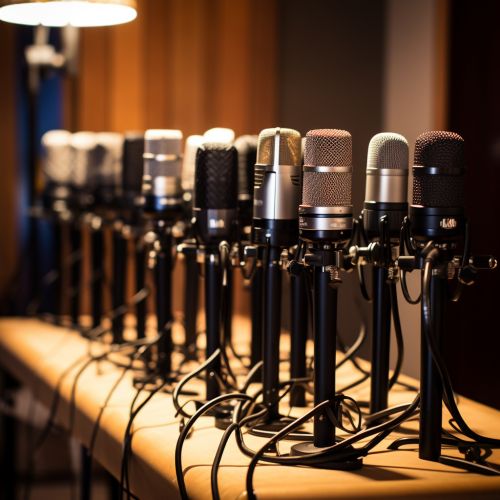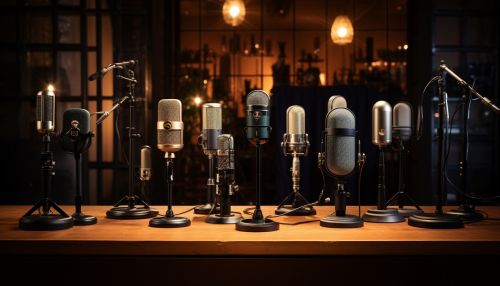Microphone Techniques and Audio Mastering
Microphone Techniques
Microphone techniques are a crucial aspect of audio recording and production. They involve the strategic placement and selection of microphones to capture sound in a way that best suits the intended output. There are several types of microphones, each with their unique characteristics and best use cases.
Microphone Types
Dynamic microphones are robust and versatile, making them suitable for live performances and high-volume sound sources. They operate using a diaphragm, voice coil, and magnet to convert sound into an electrical signal.
Condenser microphones, on the other hand, are more sensitive and accurate, making them ideal for studio recordings. They use a capacitor to convert acoustic energy into electrical energy.
Ribbon microphones are delicate and known for their smooth, vintage sound. They use a thin metal ribbon to pick up sound, which makes them ideal for softer, more nuanced recordings.
Microphone Placement Techniques
Microphone placement techniques vary depending on the sound source, the type of microphone, and the desired sound. Some common techniques include:
- Close miking: This involves placing the microphone close to the sound source to capture direct sound and minimize room ambiance. It's commonly used in studio recordings to achieve a clear and detailed sound.
- Distance miking: This technique involves placing the microphone at a distance from the sound source. It captures more of the room's acoustics and ambiance, creating a more natural and open sound.
- Stereo miking: This involves using two microphones to capture a stereo image of the sound source. There are several methods of stereo miking, including X-Y, A-B, and Mid-Side.


Audio Mastering
Audio mastering is the final step in the audio production process. It involves refining the mixed audio to ensure it sounds balanced and cohesive across various playback systems. Mastering engineers use a range of specialized tools and techniques to achieve this.
Mastering Tools
Mastering tools include equalizers, compressors, limiters, and stereo enhancers.
Equalizers are used to balance the frequency content of the audio. Compressors and limiters control the dynamic range, ensuring that the audio isn't too loud or too soft. Stereo enhancers are used to adjust the stereo image and make the audio sound wider or narrower.
Mastering Techniques
Mastering techniques vary depending on the genre, the medium of playback, and the desired sound. Some common techniques include:
- Loudness normalization: This involves adjusting the overall loudness of the audio to meet industry standards. It ensures that the audio plays back at a consistent volume across different platforms.
- Stereo widening: This technique is used to enhance the stereo image of the audio, making it sound wider and more immersive.
- Dynamic range compression: This involves reducing the difference between the loudest and softest parts of the audio. It ensures that the audio sounds balanced and cohesive.
